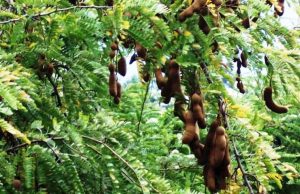The plant is commonly referred to as a bitter tomato belonging to the plant family Solanaceae. It is a Shrub, perennial or annual herb, that is up to 200 cm tall. The plant is often much-branched with the root system extending both vertically and laterally.
The branches and leaves can be with or without prickles and stellate hairs. The leaves do alternate and vary – simple, stipules absent, petiole up to 11 cm long, blade broadly ovate, either obtuse or cordate at base, pinnately veined. The upper leaves are smaller, narrower, less lobed and often sub opposite.
The flowers are bisexual, regular, pedicel, corolla stellate, white and sometimes pale purple. The stamens are inserted near the base of the corolla tube and alternate with corolla lobes. Fruit a globose to depressed globose, ellipsoid, ovoid or fusiform berry, usually many-seeded.
Solanum aethiopicum grows in tropical Africa, especially in Cameroon and Uganda. The glabrous leafy shoots are cooked as spinach. The plant thrives under warm and humid conditions. It is popularly referred to as Nakati. In many countries, the highly variable fruits of the plant are eaten both in raw or cooked form.
The fruits are usually harvested while still green, before the skin becomes thick. The level of bitterness of the fruits depends on the amount of photochemical saponins in it. The leaves of Nakati are eaten as vegetables and are actually more nutritious than the fruits. The slightly bitter taste of the cooked leaves makes it a real delicacy for many people. The high demand for Nakati in many local markets has made it to become more popular as a cultivated crop.
Apart from being a source of food, Nakati is also widely known to have amazing health benefits. According to a number of literatures, regular consumption of this plant can reduce the chances of one suffering from a number of disease conditions such as gastrointestinal diseases and disorders including indigestion. It can also be used for the management of diabetes.
Regular consumption of Nakati, just like other vegetables, is very important for maintaining a balanced body weight and preventing the risk of obesity. This is attributed to the presence of high dietary fibres, low protein, low sodium and low caloric content of both the fruits and the leaves. The high fibres and low-fat content of the leaf also makes Nakati so helpful in preventing diseases such as constipation, carcinoma of the colon and rectum, and prevent hardening of the arteries which may lead to heart attacks, stroke, and peripheral vascular diseases. The plant is also containing very high level of potassium, a necessary salt that helps in maintaining the function of the heart and regulate blood pressure.
The presence of phytochemical retinol in Nakati is vital for boosting good eye vision, growth and immune system. The retinol is also important in the treatment of glaucoma; a condition that results into damage of the optic nerve leading to progressive, irreversible vision loss.
Nakati is anti-cancerous in nature due to its constituent of polyphenols, anthocyanins and chlorogenic acid. These compounds are anti-inflammatory and also act as antioxidants that eradicate harmful toxins from the body systems. Therefore, consumption of the fruits of this plant is important in preventing the growth of cancer cells in the body. Furthermore, the leaves of Nakati contain alkaloids, which possess anti-inflammatory and immunosuppressive properties which is essential for good health.
The roots infusion and fruits of Nakati are used as a carminative to prevent bloating in the gastrointestinal tract and treat colic, as well as high blood pressure. The leaf juice is also used as a sedative to treat uterine complaints.
Let the green vegetables be your medicine for good health.
– Richard Komakech






